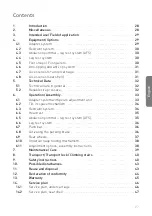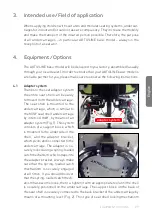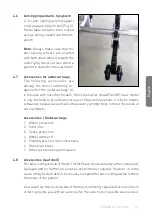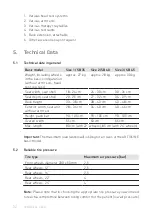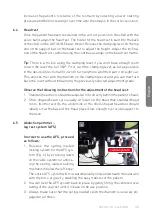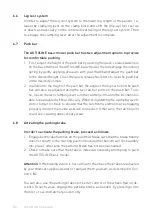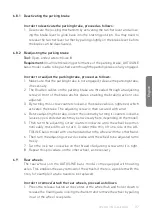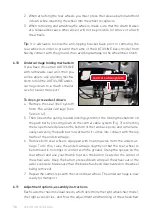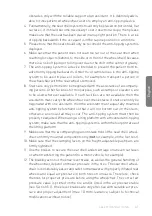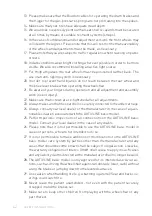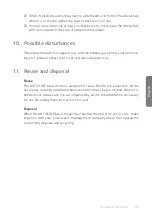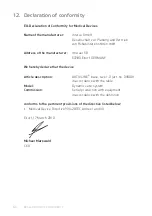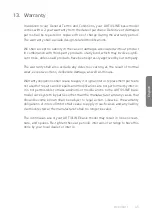
SAFETY INSTRUCTIONS
41
E
ng
lis
h
obstacles only with the reliable support of an assistant. It is definitely advis-
able for inexperienced wheelchair users to employ an anti-tipping device.
4
. Fundamentally, the seat shell system should only be placed on horizontal, flat
surfaces. If it should become necessary to set it down on a slope, then please
make sure that the seat has been placed in an upright position. There is a risk
of tipping backwards if the occupant is in the supine position on an incline.
5
. Please note that the seat should only be reclined if the anti-tipping system is
deployed.
6
. Make sure that the patient does not lean too far out of the seat shell when
reaching for objects (behind, to the side or in front of the wheelchair) because
there is a risk of tipping or rolling over due to the shift in the center of gravity.
7
. The anti-tipping system is a device intended to prevent the patient from in-
advertently tipping backwards. Under no circumstances is the anti-tipping
system to be used in place of rollers, for example to transport a person in
the wheelchair with the rear wheels removed.
8
. Stairs are only permitted to be negotiated with the assistance of accompany-
ing persons. Other facilities for this purpose, such as ramps or elevators, are
to be used wherever available. If such facilities are not available, then the
assistants must carry the wheelchair over the obstacle. If stairs can only be
negotiated with one assistant, then the assistant must adjust any mounted
anti-tipping system beforehand so that it will not bottom out on the stairs;
otherwise a serious fall may occur. The anti-tipping system must then be
properly readjusted. When using a lifting platform with a mounted anti-tipping
system, make sure that the anti-tipping system is within the footprint area of
the lifting platform.
9
. Make sure that the accompanying persons take hold of the seat shell wheel-
chair on firmly mounted components only (
not
, for example, on the foot rest).
10
. Make sure that the clamping levers on the height-adjustable push bars are
firmly tightened.
11
. Use the brakes to secure the seat shell undercarriage on uneven surfaces
or when transferring the patient (to a motor vehicle, for example).
12
. The braking action of the knee lever brake, as well as the general handling of
the wheelchair, depend on the air pressure in the tires. The seat shell wheel-
chair is considerably easier and safer to maneuver with properly inflated rear
wheels and equal air pressure in both tires on one axle. Therefore, check
the tires for proper air pressure before using the wheelchair. The correct air
pressure value is printed on the tire and/or listed in the air pressure table
(see Section
5
.
1
). Knee lever brakes are only effective with suitable air pres-
sure and proper adjustment (max.
10
mm clearance, subject to technical
modifications without notice).
Summary of Contents for AKTIVLINE Basis SB 35
Page 1: ...03 2018 Bedienungsanleitung Operating Guidelines AKTIVLINE Basis AKTIVLINE Basis...
Page 48: ...Notes...
Page 51: ......

